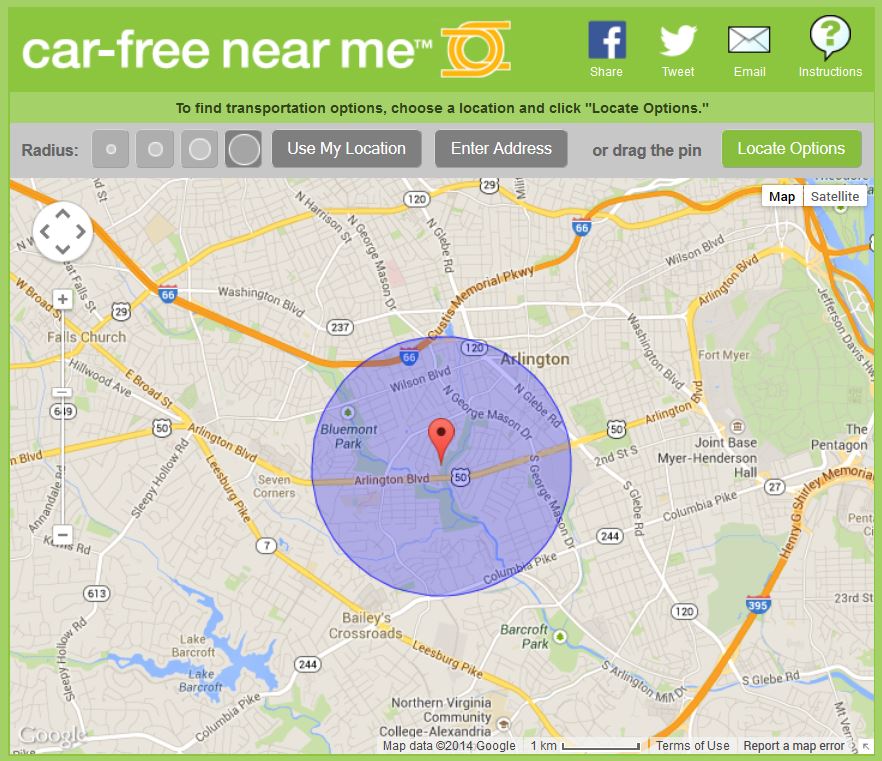Arlington Helps Residents Go “Car-Free”
Arlington has already provided a shining example of the potential of transit-oriented development to create attractive, liveable communities and address transportation challenges. Now, Arlington is taking the lead again by showing other jurisdictions across the country how to make car-free living convenient and fun through new information tools.
By Ben Davis
Later this year, we’ll be releasing an update of Transportation and the New Generation to document new trends and research on the decline in driving among young Americans. Working on the report today, I came across Car-Free Diet, a website devoted to providing people with the tools to drive less in Arlington, Virginia. It was so great, I had to share…
Some background. For eons, America’s transportation policy has been dominated by road-building – since 1980, we have constructed an average of more than 22,000 new lane miles every year. Arlington, however, was one of few places to seriously invest in non-driving development. When the Metrorail subway came to Arlington in the 1970s, the city decided to build the line underground and place mixed-use neighborhoods around the stops. The result was compact communities – connected via public transit – with homes, businesses, entertainment and shopping centers all within easy walking distance.
Since then, the city has continued to make urban planning decisions that enable residents to get around without a car (in 2002, Arlington received the EPA’s Smart Growth Achievement award for its mixed-use developments along the Metro corridor). Now that Americans are decreasing the time spent behind the wheel – and are instead taking public transit, biking and walking – policies and programs that give people the tools to travel without owning an automobile make sense now more than ever… but many cities have yet to get on board.
Meanwhile, Arlington is continuing to invest in alternatives to driving. The city’s transportation system is already multimodal – allowing people to seamlessly travel from sidewalk to subway to bike path to car share – and now with Car-Free Diet (which provides users with a one-stop place to find details on all transportation options in the city), residents and visitors can easily navigate between all the transportation modes.
And the website has it all! There are a transit how-to guide, links to purchase bike share passes, and information on rail and bus routes. There are kitschy cute videos for skeptics of car-free diets and tickers on reductions in vehicle trips, gas and carbon dioxide. Perhaps the best feature is car-free near me, an app that will locate – in real time – all bus, rail, bike share and car share stops/spaces within a certain radius of your current location.

Arlington has already provided a shining example of the potential of transit-oriented development to create attractive, liveable communities and address transportation challenges. Now, Arlington is taking the lead again by showing other jurisdictions across the country how to make car-free living convenient and fun through new information tools.
